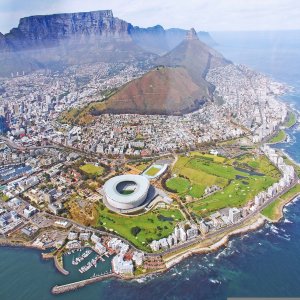
New Solar-Powered Technology is Cleaning Xochimilco’s Canals
 By Antonio Trujillo | Junior Journalist & Industry Analyst -
Fri, 08/27/2021 - 11:15
By Antonio Trujillo | Junior Journalist & Industry Analyst -
Fri, 08/27/2021 - 11:15
Mexican scientists have managed to utilize solar energy to create “nanobubbles” capable of cleaning historical Xochimilco canals, considered a popular tourist attraction.
The use of solar energy has increased in the past years, along with environmental efforts worldwide. Powering homes is no longer one of its most impressive attributes, but cleaning water bodies, it is. Thanks to new scientific developments made by Mexican scientists from the Center for Research and Advanced Studies (CINVESTAV).
This new technology consists of a solar-powered pump that releases the so-called “nanobubbles” into the water. With it, scientists are now able to clean the long-polluted waters of the various canals of Xochimilco, declared in 1987 a UNESCO World Heritage Site and popular tourist attraction for its appeal as a remnant of the long-gone Aztec era.
Refugio Rodríguez Vázquez, CINVESTAV researcher, explained that the nanobubbles release oxygen in their wake, eliminating pollutants that may result harmful to the environment, helping both flora and fauna in the way, and also help reduce green gas emissions. “We've seen a good proliferation of the Moctezuma frog in the places we have bubbled," she added, cheering the conservation efforts of one of Mexico’s endemic amphibian species. The solar panels now powering the technology sit atop the various “trajineras” of Xochimilco, a system of small boats used to transport visitors and take them sightseeing through the canals.
But touristic and environmental rehabilitation is not the sole purpose of the nanobubbles, as Rodríguez further comments, “the nanobubble system enables local farmers to be able to work on their chinampas (floating beds) and make them productive by having cleaner environment conditions.”
In addition, nanobubbles have made their way into two water-treatment plants in Mexico City, expanding their water-cleaning uses to a wider population, and also as cell phone charging stations, to be used by tourists and locals alike. Researchers pointed out the nanobubble technology is also being considered to be replicated in other waterways in Mexico City, where water supply and quality is considered poor and too dependent on drought and other weather events. Nanobubbles are expected to improve the quality of water for residents of neighboring communities as well.
These environmental efforts have been coupled with the continued rehabilitation efforts of the entire Xochimilco Park, which have already had their effects on their real estate market: an unprecedented increase in value, as reported by MBN.
















